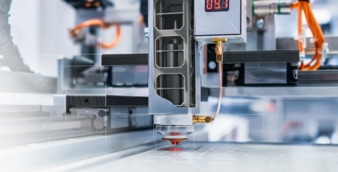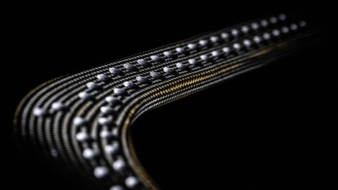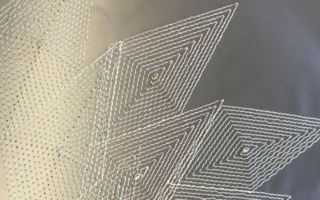18/01/2023 – Lightweight construction — auf Deutsch lesen
Preforms from vombaur increase performance and service life
Lightweight components offer innovation and savings potential. This also applies to the lightweight and resilient components made of composite textiles from Vombaur.
The advantages of fibre-reinforced materials have been utilised in aircraft and vehicle construction for many years. In times of energy scarcity and rapidly rising energy costs, many other industries are discovering the innovation and savings potential of lightweight components. Thanks to their high fibre volume content, components made of composite textiles from Vombaur offer particularly lightweight and resilient components – in all conceivable shapes and with individual properties.
Vombaur develops special preforms made of unidirectional fibre bundles for its customers, with which a fibre volume content of up to 65% can be achieved in the component. The fabrics are often made of carbon, but not always. The weft thread is reduced as much as possible in an attempt to reduce the undulation of the fibre bundles and thus optimise load absorption. Round and shaped fabrics are woven seamlessly at Vombaur.
From aviation to automotive to engineering
Be it drone or spaceships – anything that is supposed to resist gravity has to be extremely lightweight. At the same time, the demands on form, safety and precision in aviation are enormously high. As a development partner and specialist for seamless circular and shape-woven textiles, Vombaur supplies the textile architecture for high-tech components made of fibre-reinforced materials.
Vombaur's high-tech textiles are also ideally suited for the automotive industry. The lightweight, yet resilient lightweight components are used in demanding applications – such as the chassis of special vehicles. The customised fibre frame comes from Vombaur.
Vombaur preforms are used in mechanical engineering, for example, in robot arms, in laser, cutting and milling machines. They impress in this area not only thanks to their light weight, but above all through the damping qualities and the high precision of the system parts. The specific combination of fabric and matrix ensures material properties of component that are precisely matched to the task at hand.





